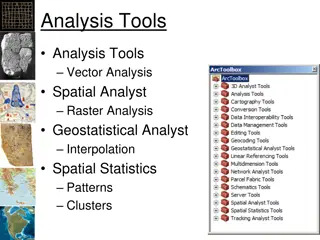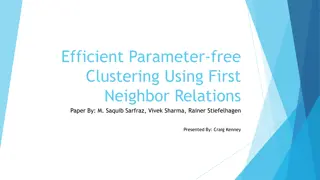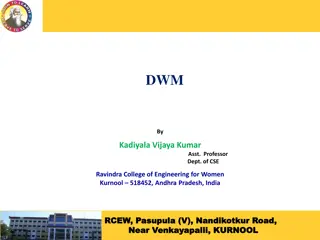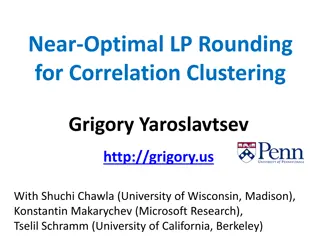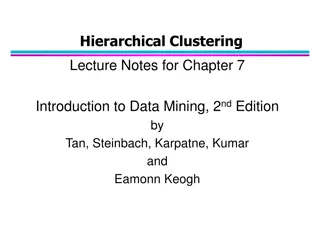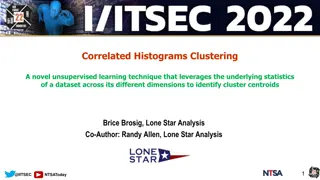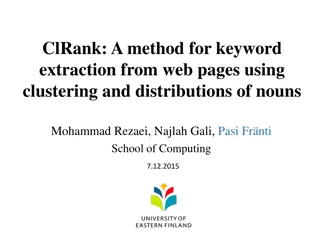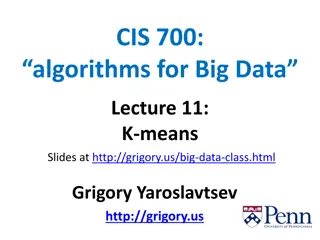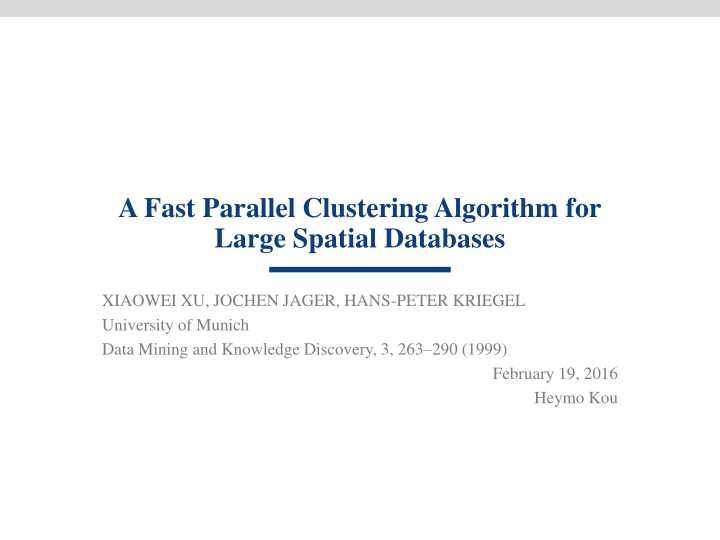
Fast Parallel Clustering Algorithm for Spatial Databases
"Learn about a fast parallel clustering algorithm designed for large spatial databases, emphasizing speed and scalability. Discover key concepts like DBSCAN, R-tree, PDBSCAN, data placement, and more to efficiently process and merge data for spatial clustering."
Download Presentation

Please find below an Image/Link to download the presentation.
The content on the website is provided AS IS for your information and personal use only. It may not be sold, licensed, or shared on other websites without obtaining consent from the author. If you encounter any issues during the download, it is possible that the publisher has removed the file from their server.
You are allowed to download the files provided on this website for personal or commercial use, subject to the condition that they are used lawfully. All files are the property of their respective owners.
The content on the website is provided AS IS for your information and personal use only. It may not be sold, licensed, or shared on other websites without obtaining consent from the author.
E N D
Presentation Transcript
A Fast Parallel Clustering Algorithm for Large Spatial Databases XIAOWEI XU, JOCHEN JAGER, HANS-PETER KRIEGEL University of Munich Data Mining and Knowledge Discovery, 3, 263 290 (1999) February 19, 2016 Heymo Kou
Contents Introduction DBSCAN R-tree PDBSCAN Evaluation Conclusion 2 / 15
Introduction Impossible to cluster a large spatial database with single node Preserving speed & scalability is necessary 3 / 15
DBSCAN [Xiaowei Xu et al. 1996] Density-based spatial clustering of applications with noise Density based clustering algorithm One of the most cited paper in scientific literature Total rank : 24th& Data mining field rank : 1st 2 input parameters (eps) : radius of circle Minimum number of points (minPts) 4 / 15
Limitation of B+-tree B+-tree Database default index Single-dimensional index Not very suitable for multidimension Consider creating 2-dimensional index <age, sal> Index sorts by age first Nearness is not considered Cannot support non-point data Lines, shapes, etc. 80 70 60 50 40 30 20 10 Spatial clusters SAL Consider entries: <11, 80>, <12, 10> <12, 20>, <13, 75> B+ tree order 11 12 13 AGE 5 / 15
R-tree [Guttman 1984] Each key is Minimum Bounding Rectangle(MBR) Internal node set of MBRs Leaf node set of MBR & data points MBRs may overlap R*-tree [Beckman et al. 1990] Supports n-dimensional 6 / 15
PartDBSCAN (PDBSCAN) Problem DBSCAN is a single node algorithm Is there any way to distribute DBSCAN 1) Divide DB data into N partitions S1, S2, SN 2) Process DBSCAN for N partitions 3) Merge results 7 / 15
PDBSCAN Data placement Data placement is crucial for performance and scalability In a shared-nothing environment Ideal data placement strategy should satisfy Load balancing Data should be partitioned into almost equal size Near by data should be partitioned into same partition Minimized communication cost Each partition should avoid accessing remote data Distributed data access Spatial access should be supported 8 / 15
PDBSCAN Partitioning data Partitioning should consider Nearby data is in the same partition Size of each partition to be equal Every node gets R*-tree for remote access Hilbert curves Visit every grid exactly once without crossing itself Run Hilbert curves and partition data into N buckets 9 / 15
PDBSCAN dR*-tree In case of remote access is necessary Node should know which node to access Modified from R*-tree Remote data has node information dR*-tree 10 / 15
PDBSCAN Master-Slave model Master Spawn Process, initialization, aggregation Slave Perform the actual computations Run PDBSCAN on locally stored data 11 / 15
PDBSCAN Merge process Slaves send results to Master after PDBSCAN Master should decide and merge cluster if necessary 12 / 15
Evaluation Data set 13 / 15
Evaluation Speedup & Scalability Factor 14 / 15
Conclusion PDBSCAN produces exactly same result as of DBSCAN dR*-tree is necessary for data placement policy Proved to speedup & scaleup fairly 15 / 15




